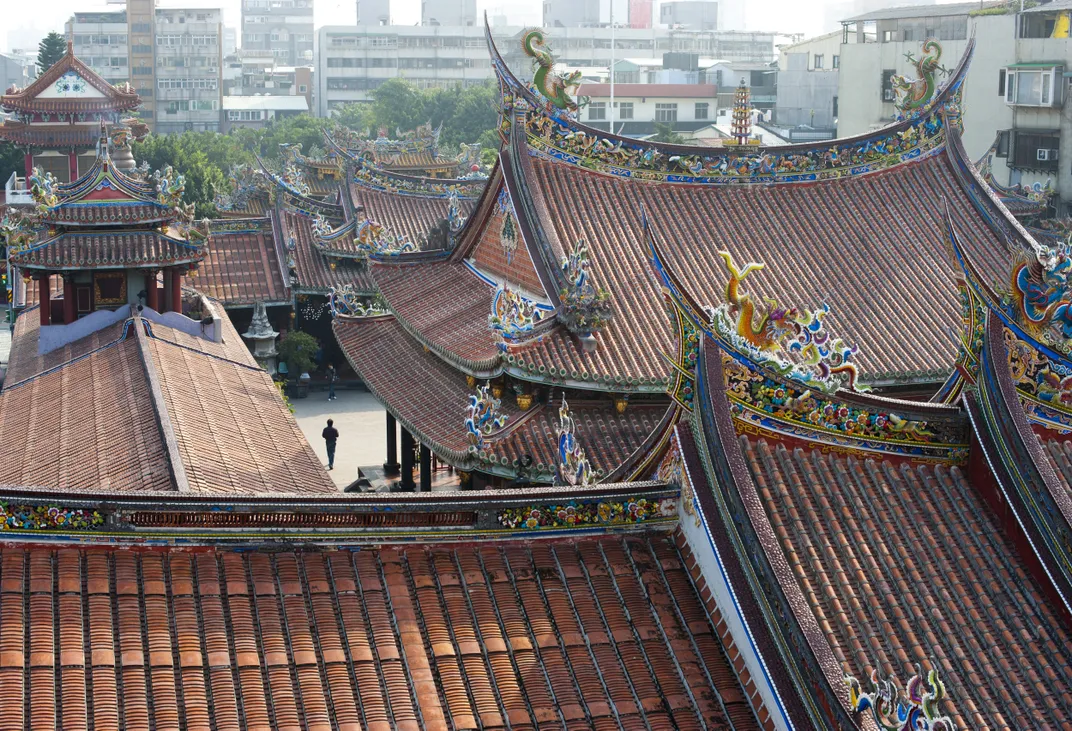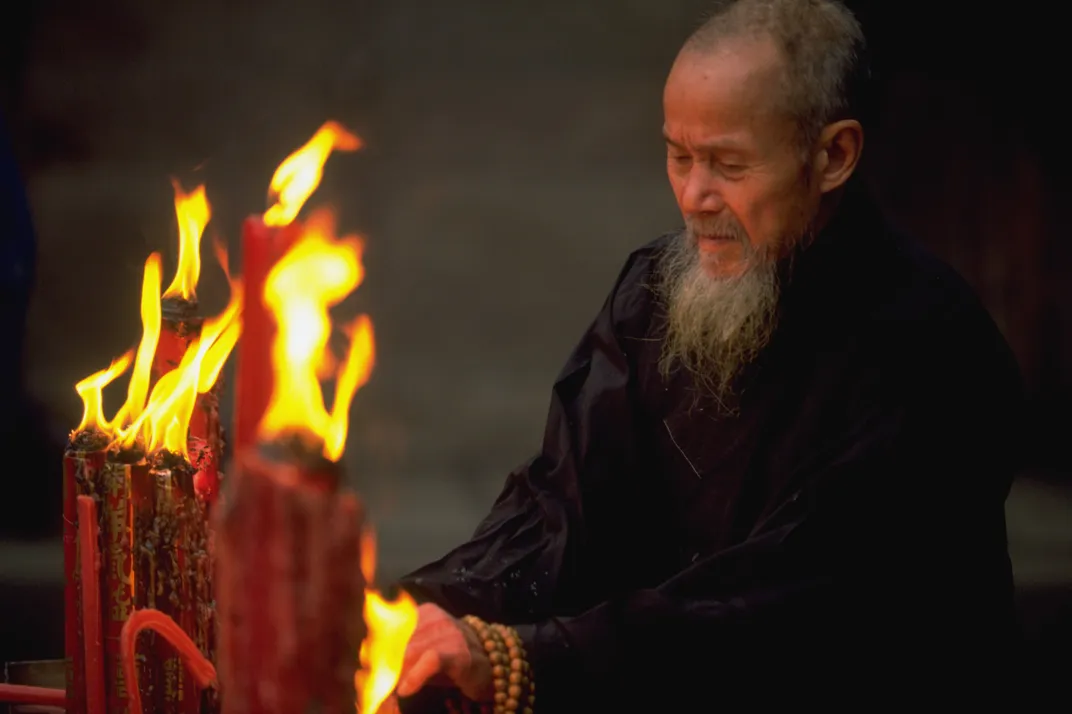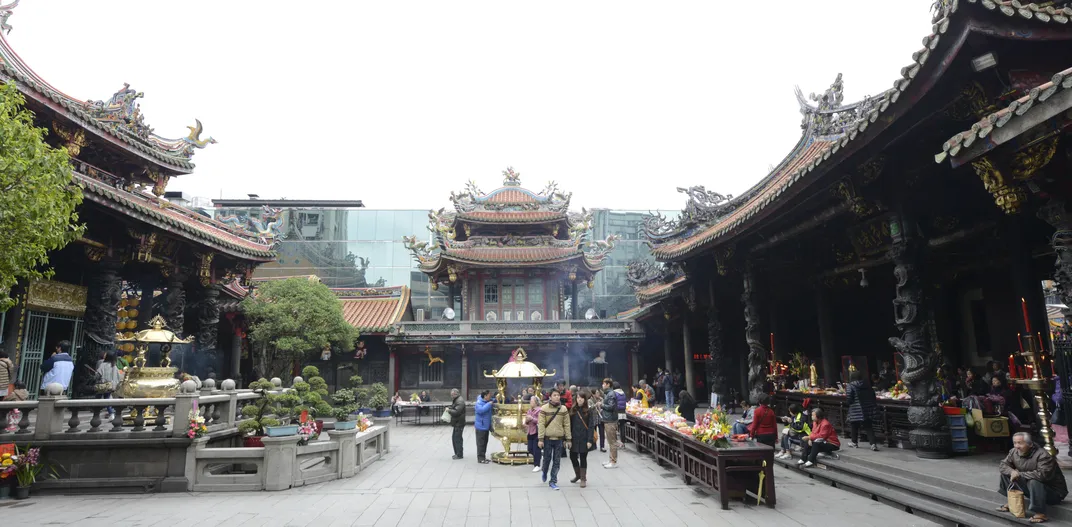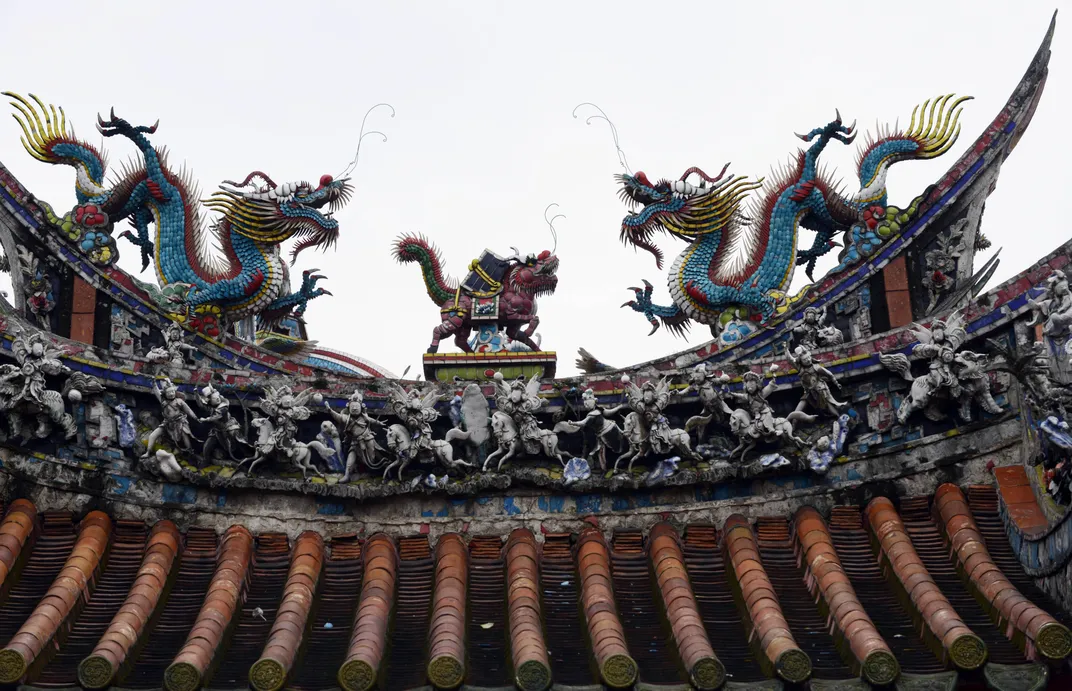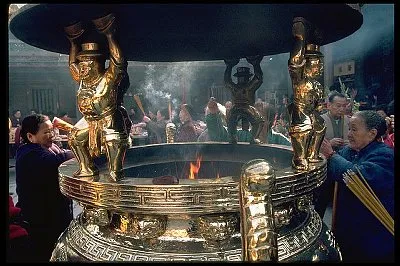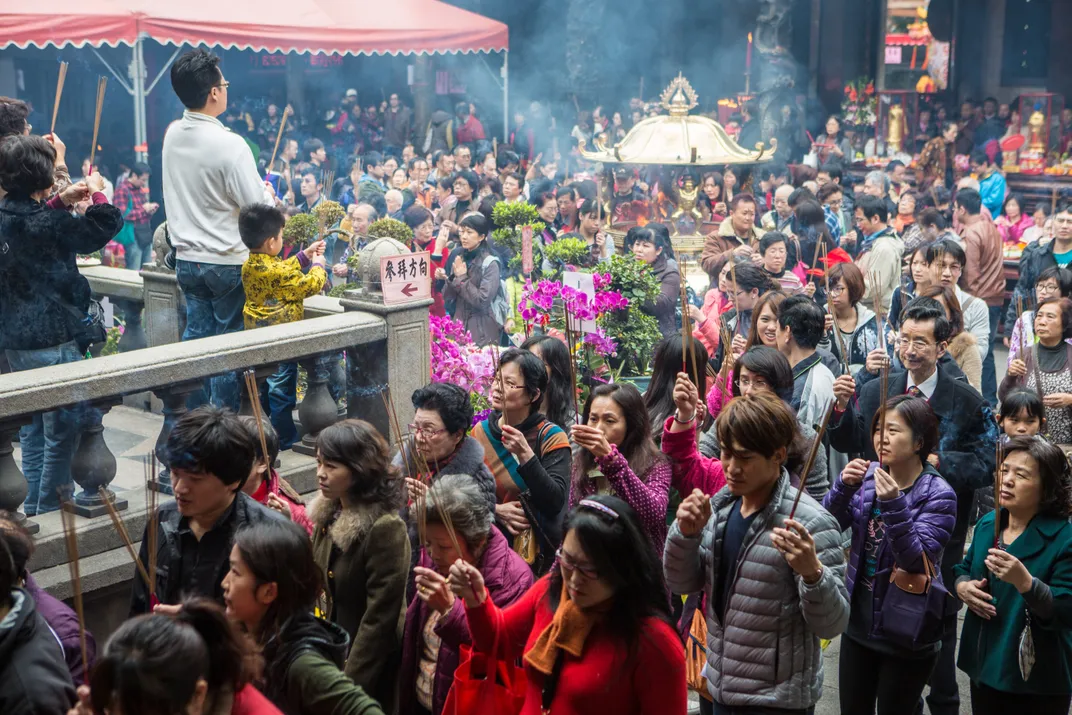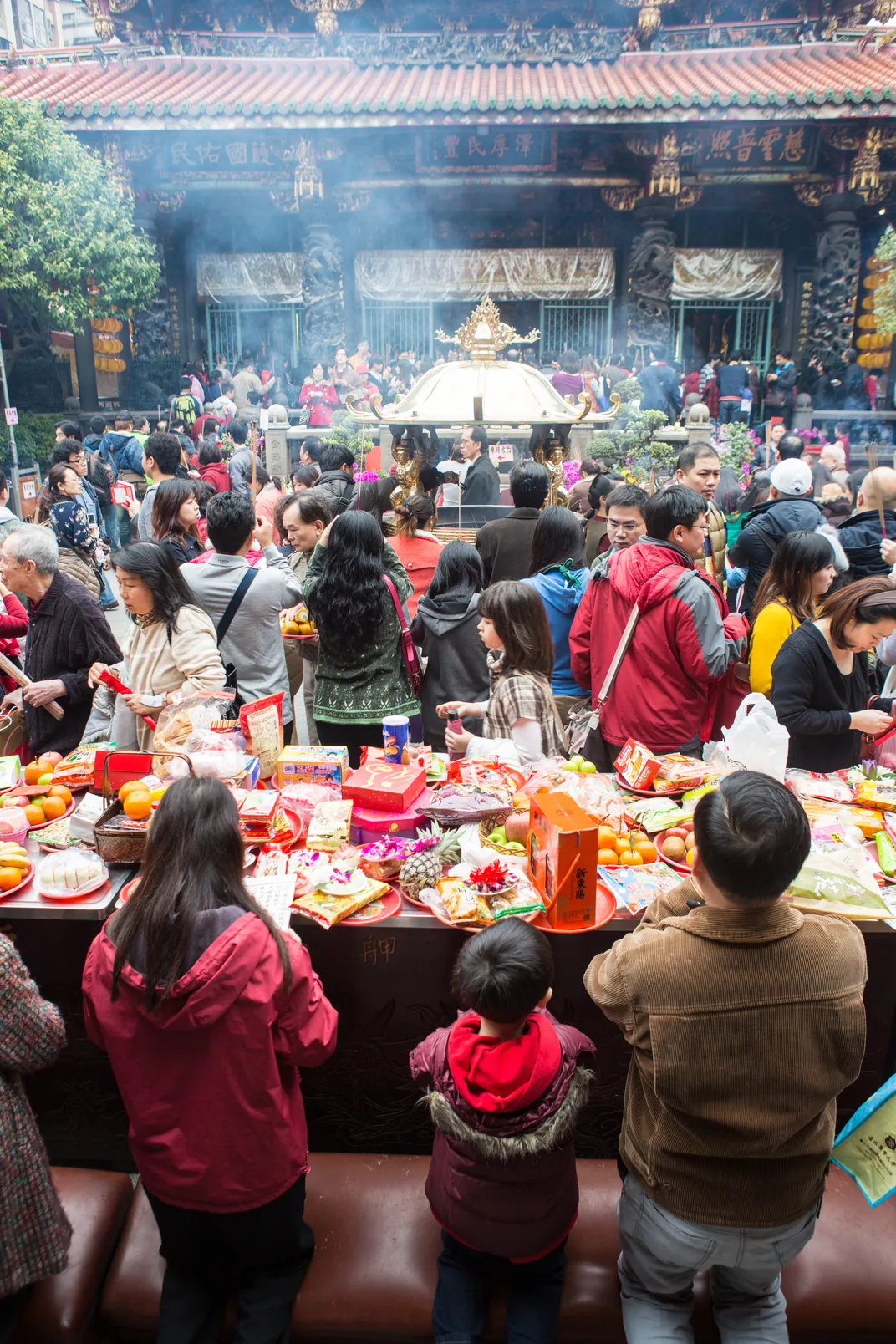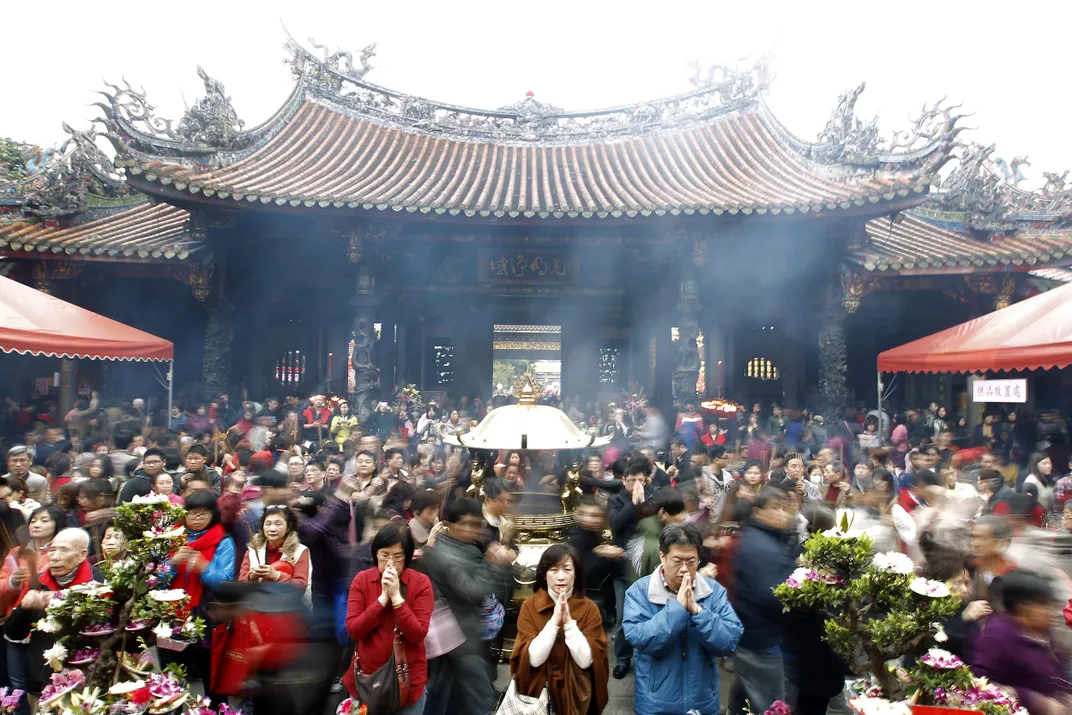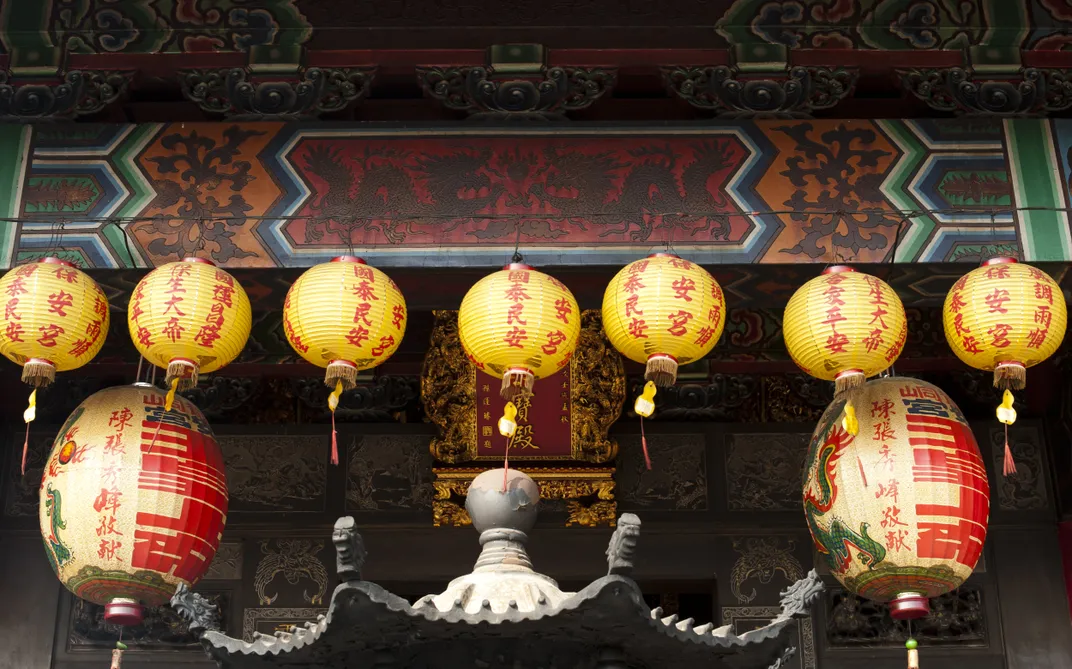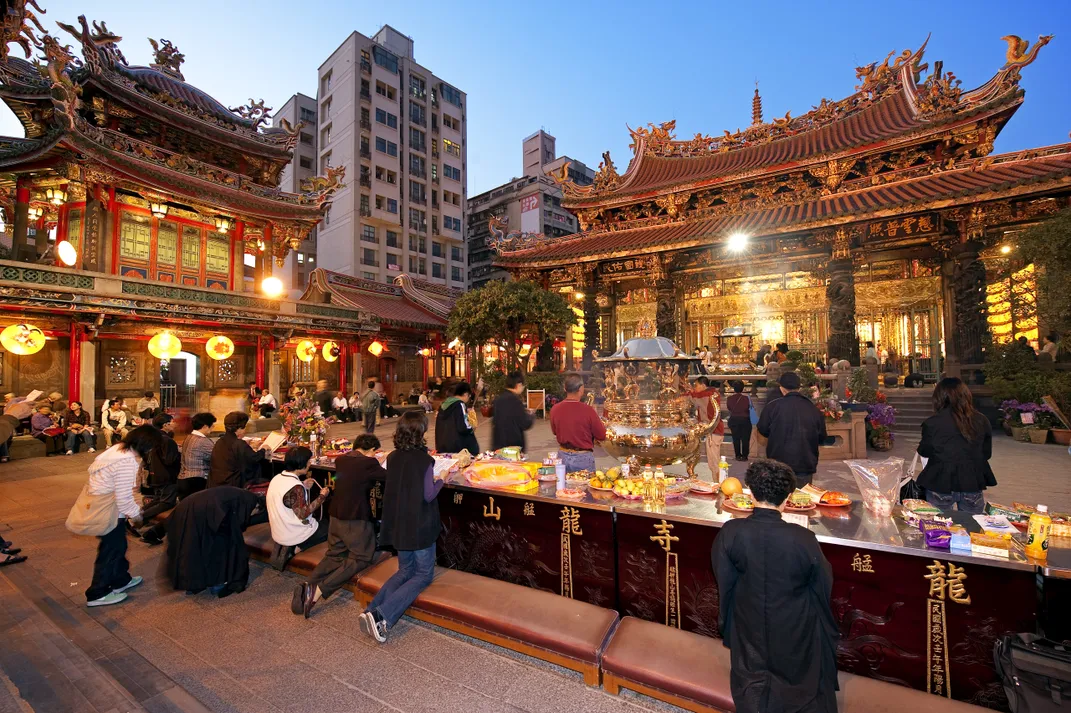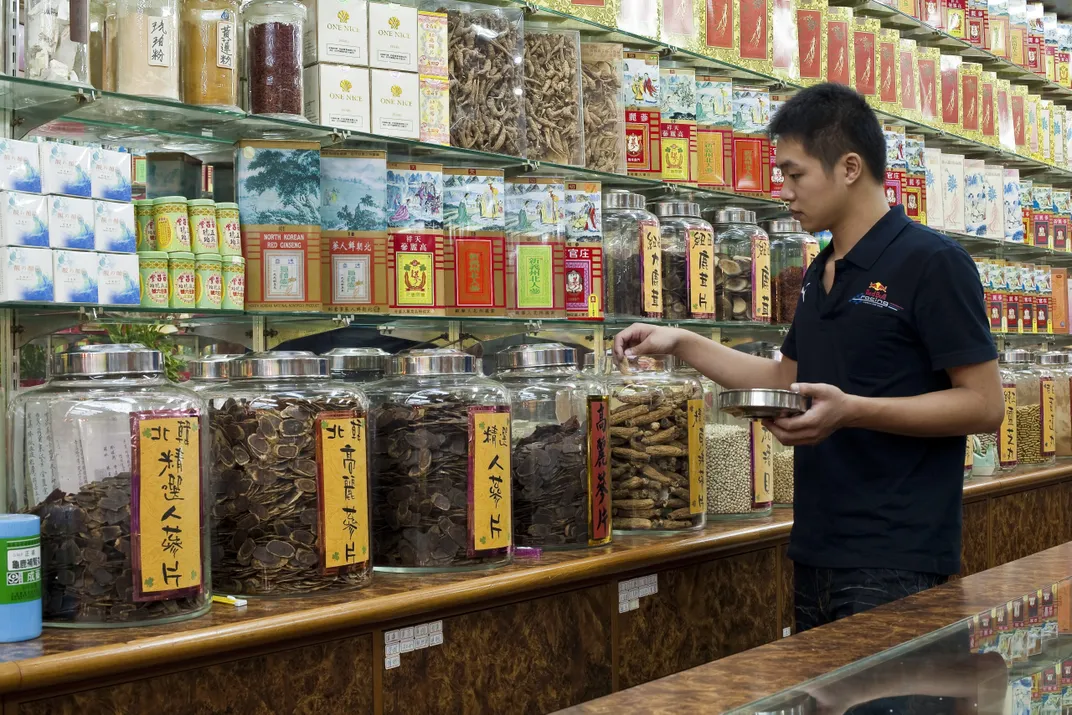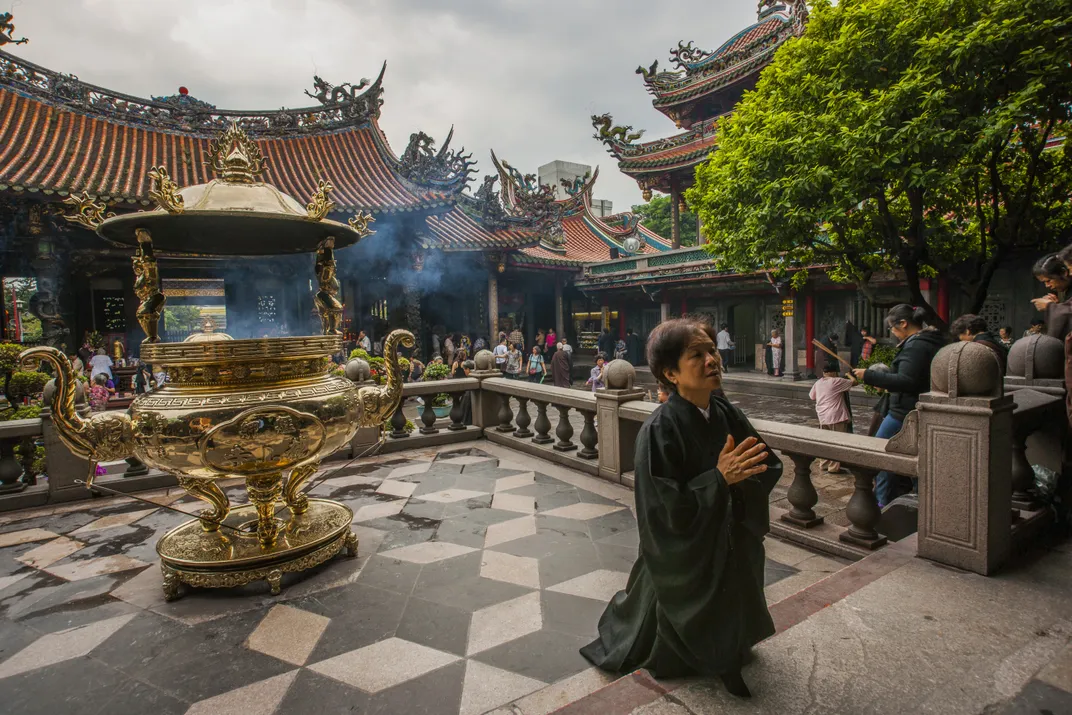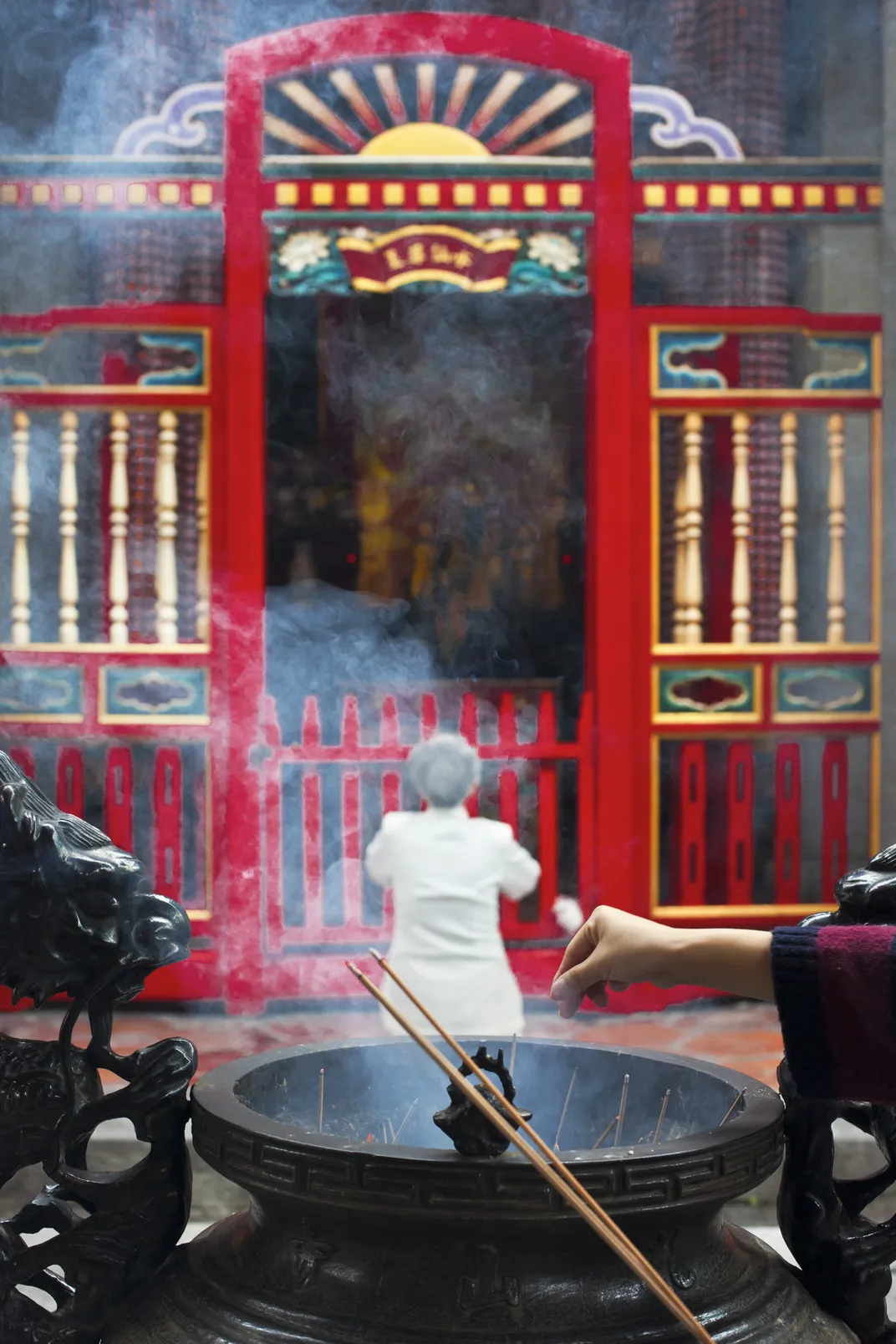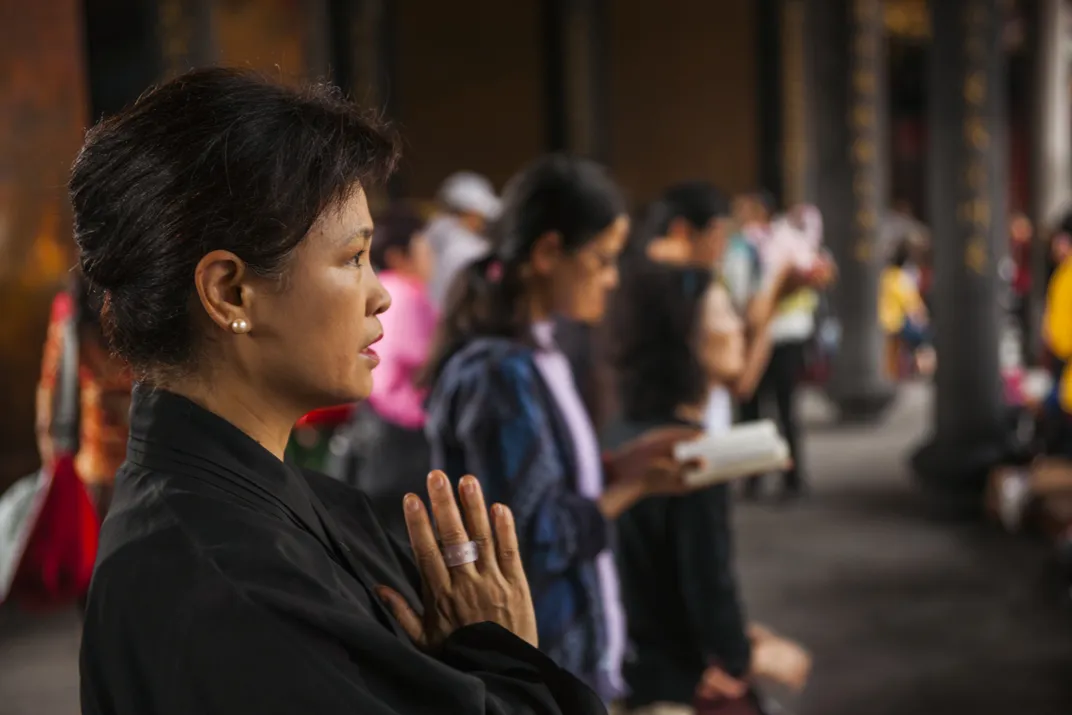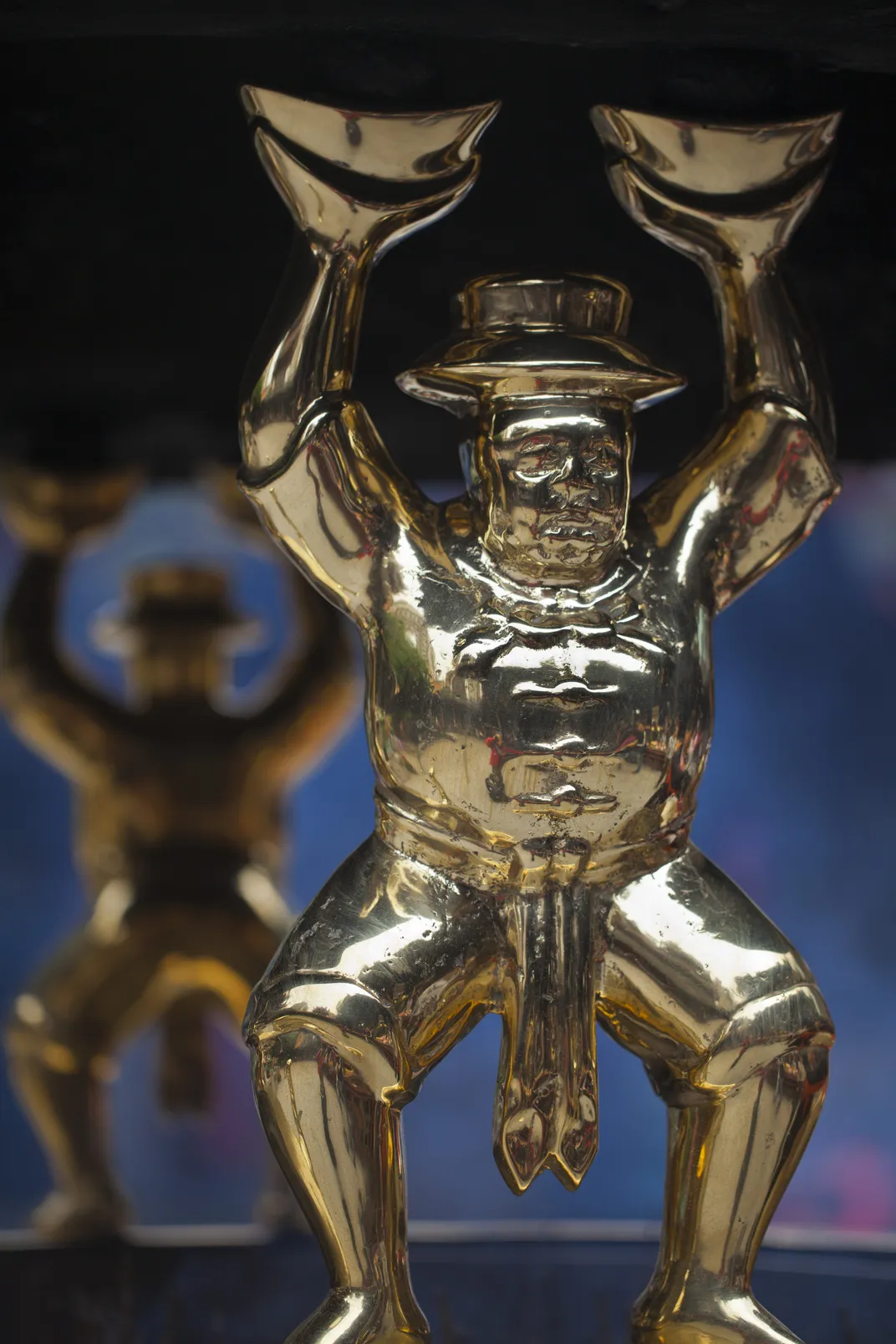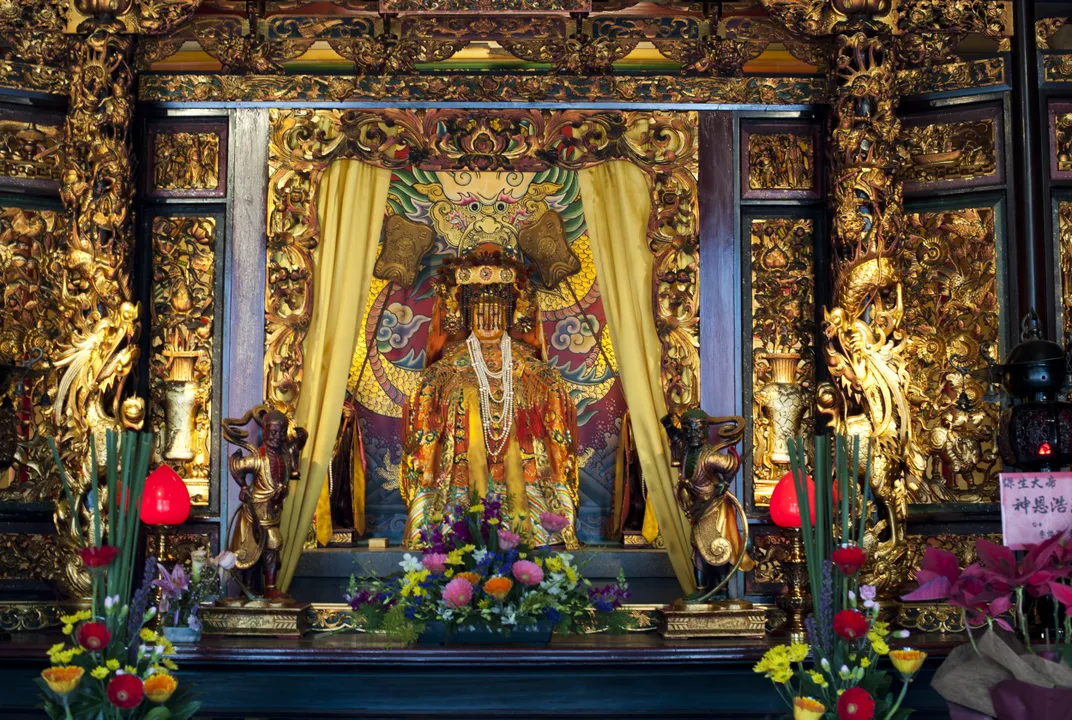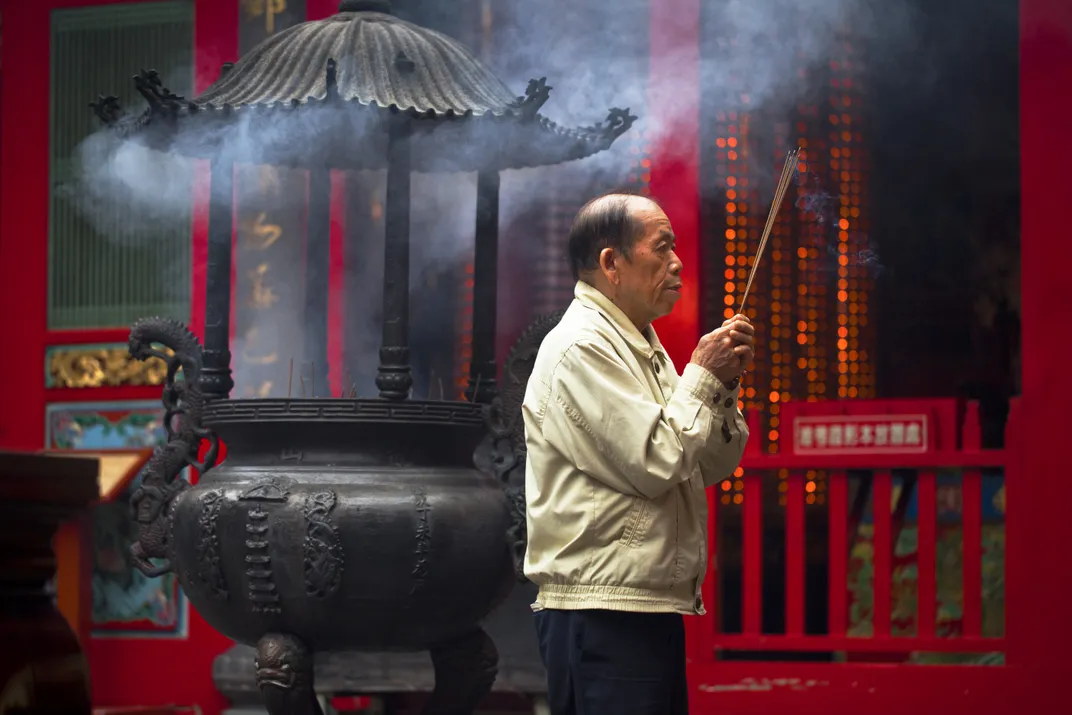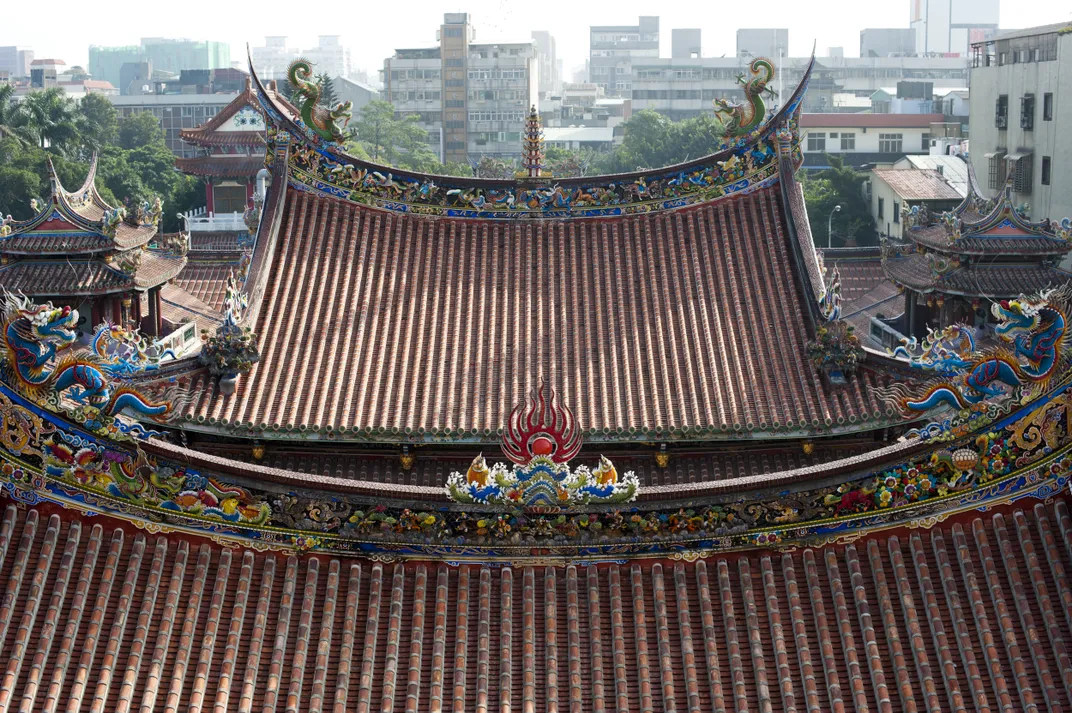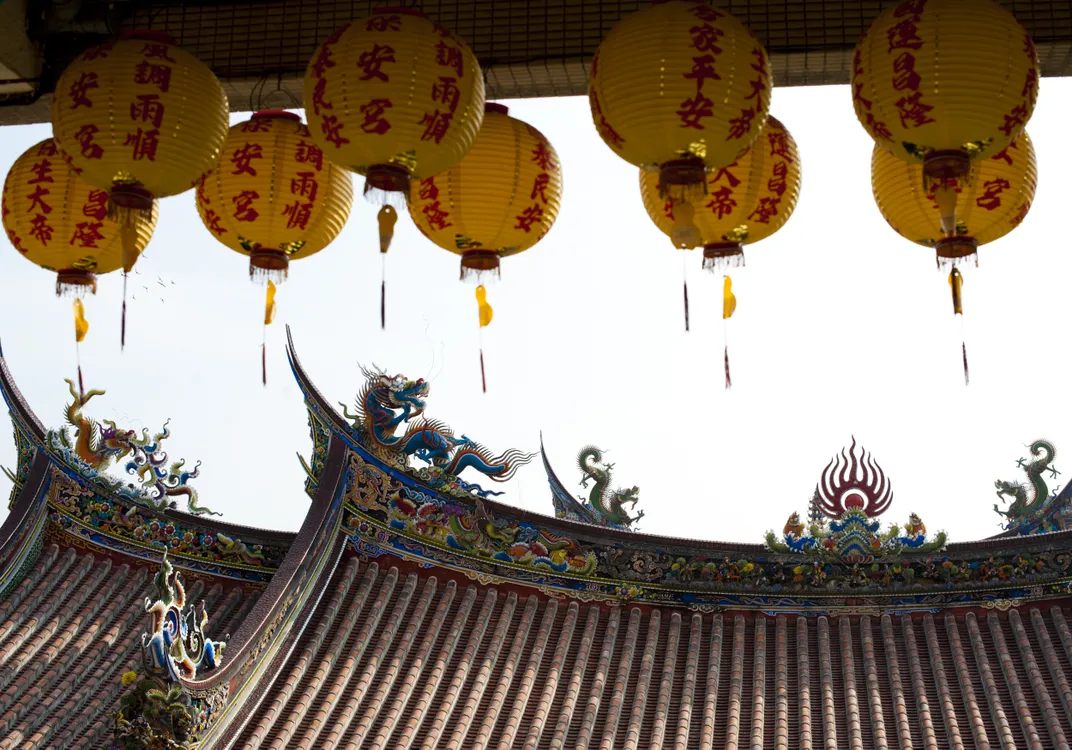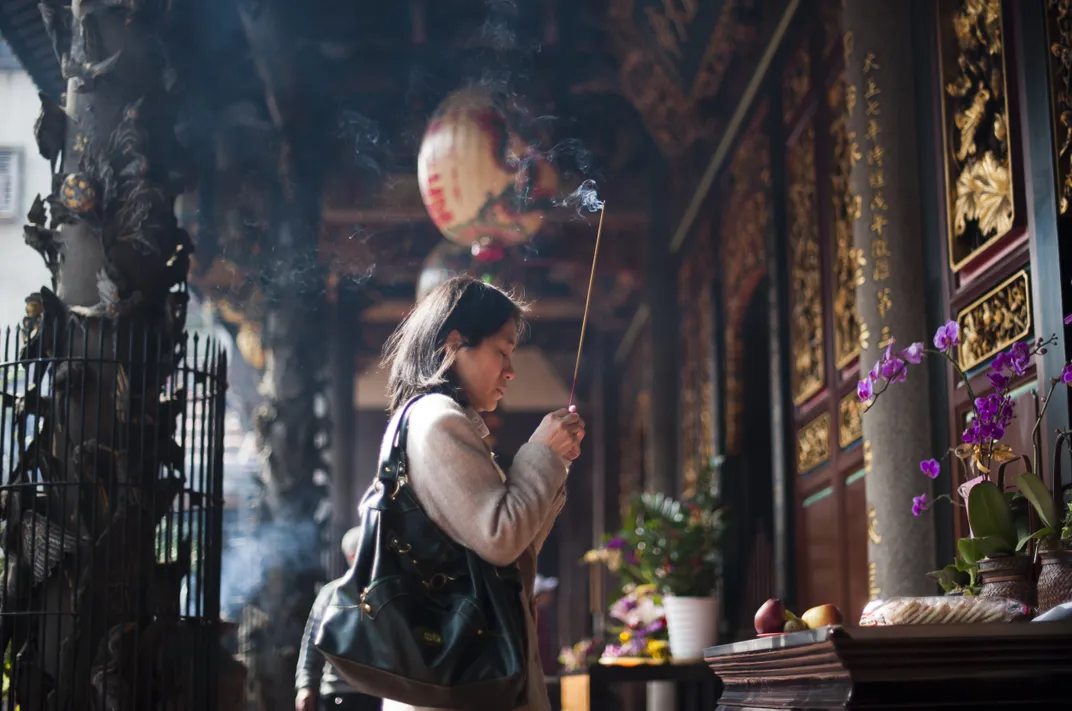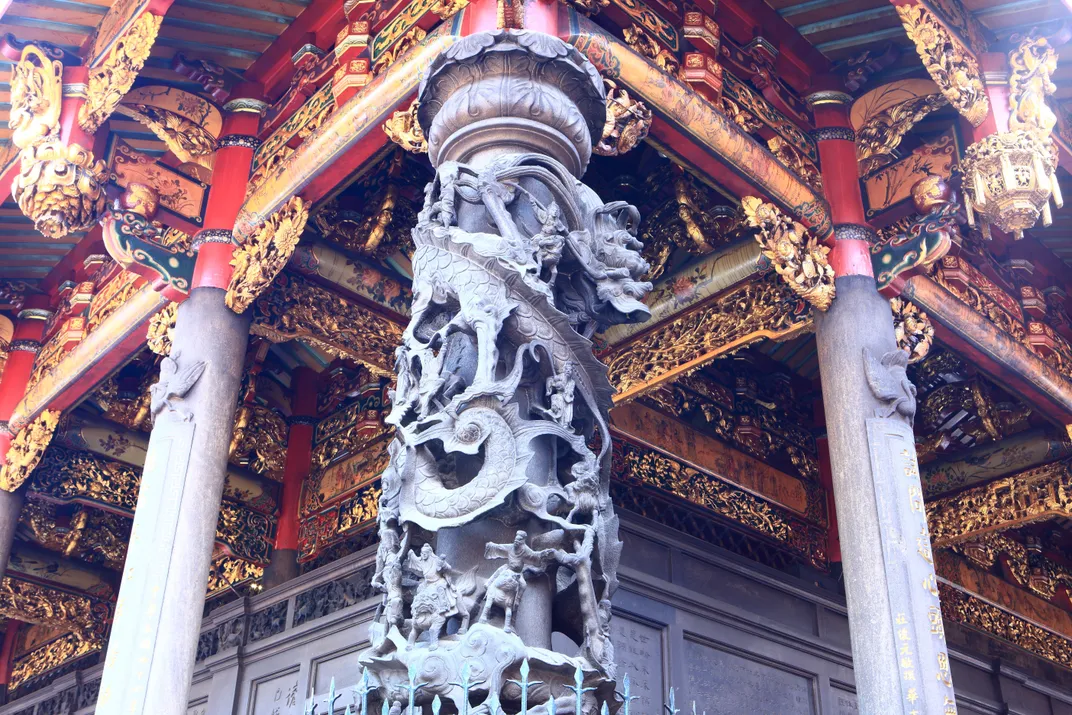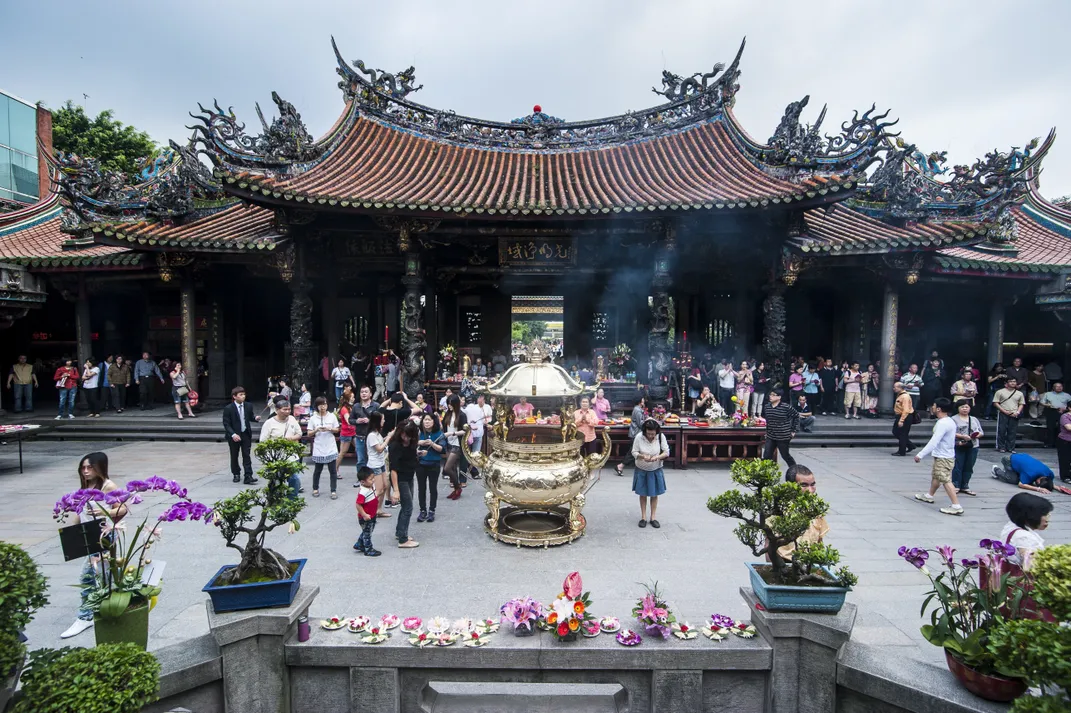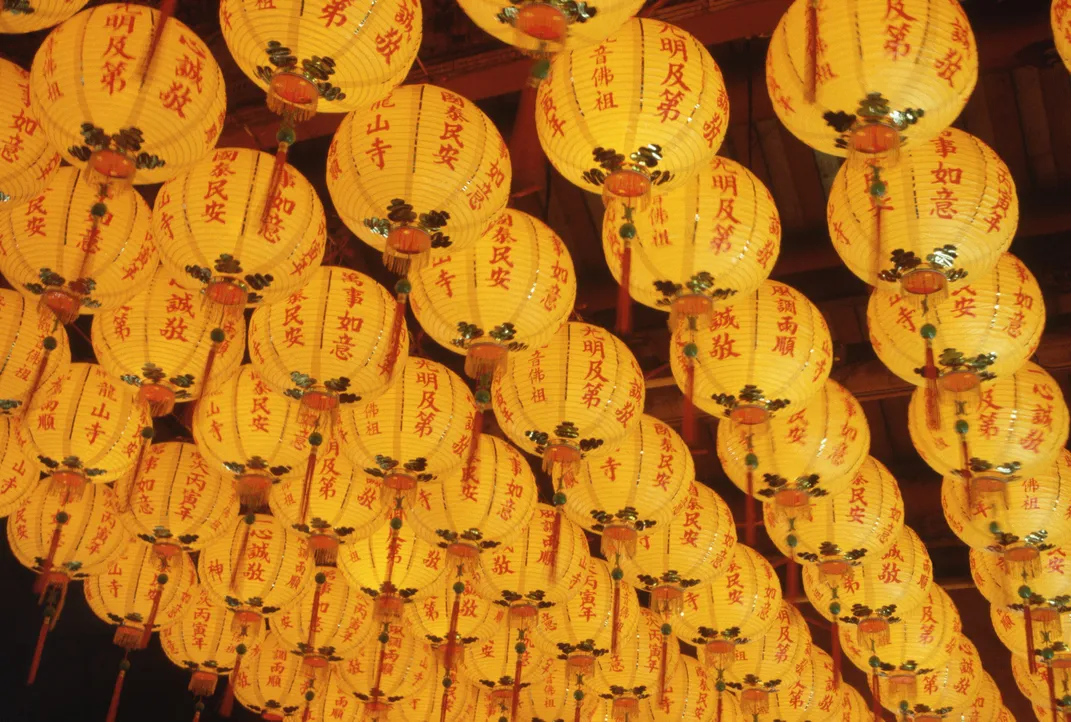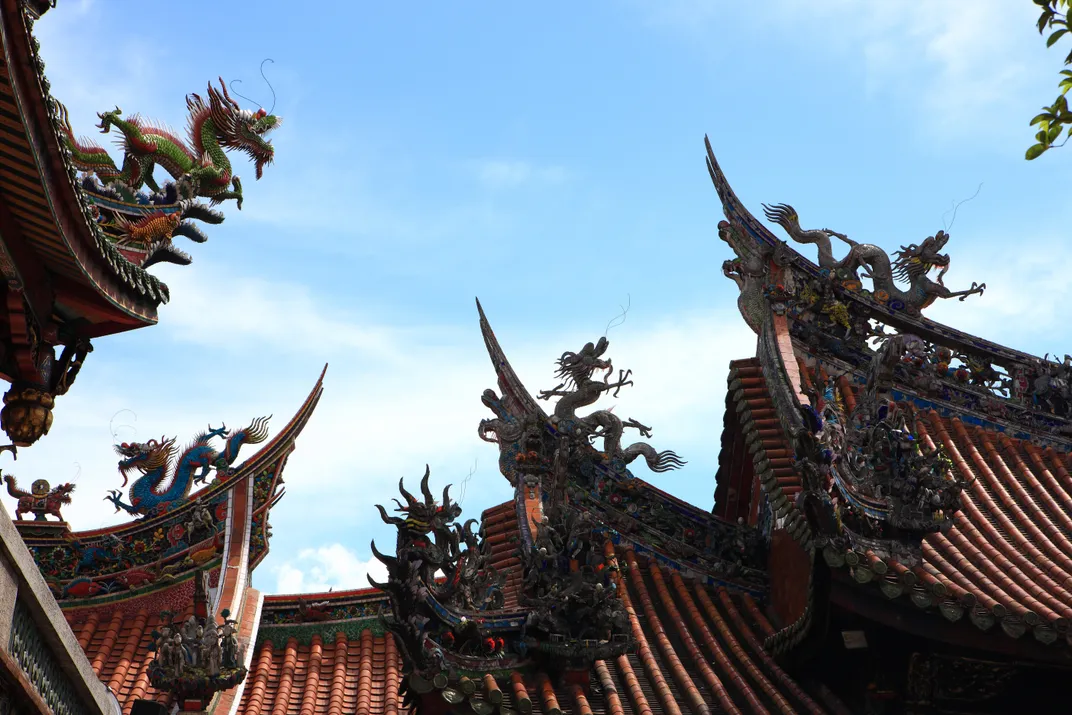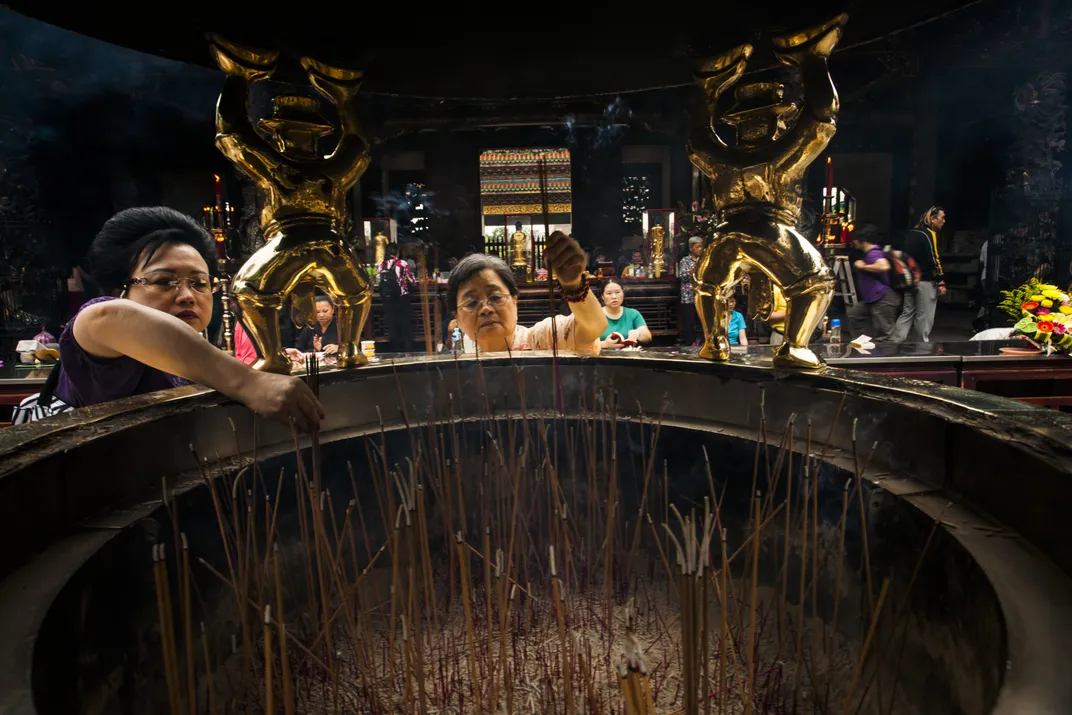Step Inside Taiwan’s Famous Longshan Temple
Founded nearly three centuries ago in Taipei, Longshan Temple survives as a bastion of local culture and center of religious life
From certain vantage points in Taipei, Taiwan's capital, the tails of intricately carved dragons appear in the skyline amid skyscrapers, modern shopping centers and Japanese-influenced structures.
Perched atop Longshan Temple, the dragons are a colorful reminder of a bygone era in a city marked by change. The temple, constructed in 1738 near the Danshui River, originally served as a place of worship and assembly for immigrants from the Fujian Province of China. Over the years, however, it has become the spiritual and social heart of the city and today, along with the traditional shops in its perimeter, exists as a window into Old Taipei.
Walking through, visitors are met by a dizzying array of red and gold embellishments. Two bronze pillars, intricately decorated with spiraling dragons, stand just outside the front hall. Incense swirls in the air, divination blocks thrown upon the floor echo through the three halls, and lanterns swing from the ceilings. References to literature and poetry abound. While the temple has been renovated and rebuilt multiple times, architect Wang Yi-shun, who oversaw the 1919-24 reconstruction, had a lasting impact on the structure of Longshan. Its stone, wood and bronzework is magnificent, and only the most skilled craftsmen are brought in for restoration.
On display in the main hall is the Buddhist bodhisattva of compassion and mercy, Guanyin. Masterfully carved of camphor wood, she sits erect and calm, despite having seen the temple through trying times. In 1945, the Allied Forces hit the temple in an air raid, igniting the main hall in flames. Famously, the statue survived with but a skirt of ash at its base. On Guanyin’s left and right Wenshu, the bodhisattva of transcendent wisdom, and Puxian, the bodhisattva of action, stand guard. Wenshu carries a flame sword to cut down ignorance and Puxian a flower. Eighteen arhats, or enlightened disciples of Buddha, frame the trio, glistening in the lantern light.
Surrounding the temple are echoes of the old city. Just left of the temple exit is Herb Alley. When Longshan was built, those who had fallen ill would pray to Guanyin before heading to Herb Alley to purchase traditional medicines. Today, visitors enjoy cups of strong, bitter herbal tea, often brewed to help people fight the heat in warmer months.
Storied Snake Alley lies slightly west and north of the temple. A sign with the words “Taipei Hwahsi Tourist Night Market” hovers above the street. Years ago, shops stacked to the top with cages of hissing cobras and vipers used to line the street. While only a few of these shops remain today, restaurants in the alley sell snake meat in stews and stir-fry, and select vendors prepare a mixture of snake blood, bile and liquor once believed to amplify vision and sexual drive.
Flanking Longshan Temple on its western side, Xiyuan Road sells all manner of religious relics and offerings. Mirroring the temple’s decor, the street is swathed in red and gold, its two-tone interrupted only by the bright white of porcelain Buddha and Guanyin figurines. Clusters of religious money, joss sticks and other items fill shops to capacity. A few stores date back to the 19th century when religious supplies would arrive from China.
Back inside the temple, burning spirit money crackles inside a brass urn located in the courtyard. Worshipers offer fruit and delicacies to the deities as well, which they display on long tables. Those with questions toss the crescent-shaped wooden divination blocks, known as bwa-bwei, on the ground in front of the statues, finding answers in the alignment of the blocks.
While primarily Buddhist, the temple houses Taoist and folk deities as well. Built in the late 18th century when trade with China was increasing, the rear hall houses Matzu, folk deity of travel. Worshipers pray to her for safe return from land and sea journeys. Those journeying by air go to Guanyin. Matzu is guarded by Qianli Yan (Thousand Mile Eyes) and Shunfeng Er (Thousand Mile Ears) who keep pulse on the disasters and complaints of the great abroad. Numerous deities, ranging from the deity of literature to the deity of war, accompany Matzu in the rear hall.
The temple is open daily for worship and celebrates a number of festivals throughout the year. Particularly large crowds gather for celebrations at the start of the Lunar New Year. On the eve of the new year, the temple conducts a lantern lighting ceremony and, at midnight, sounds a bell and drum from its side towers.
